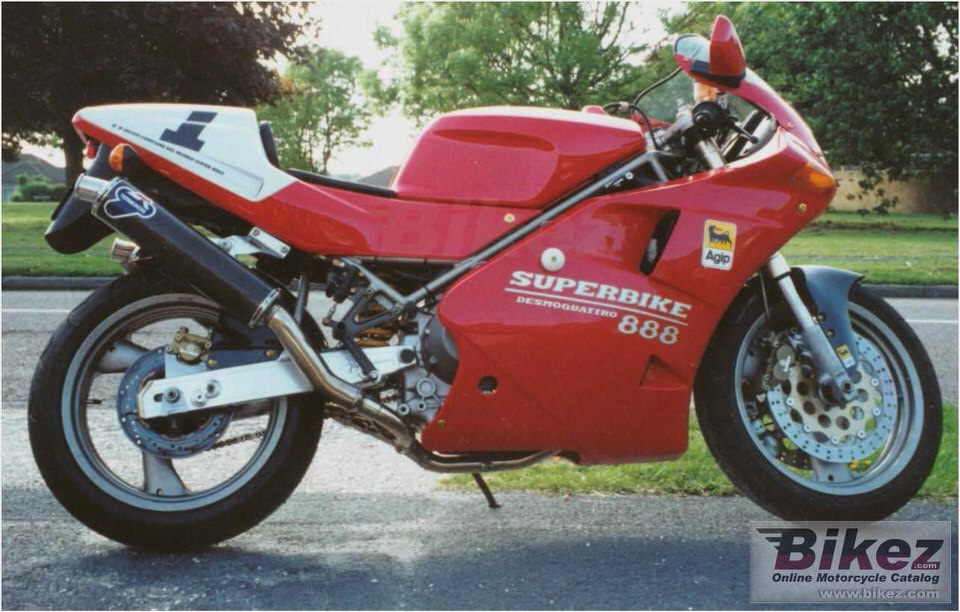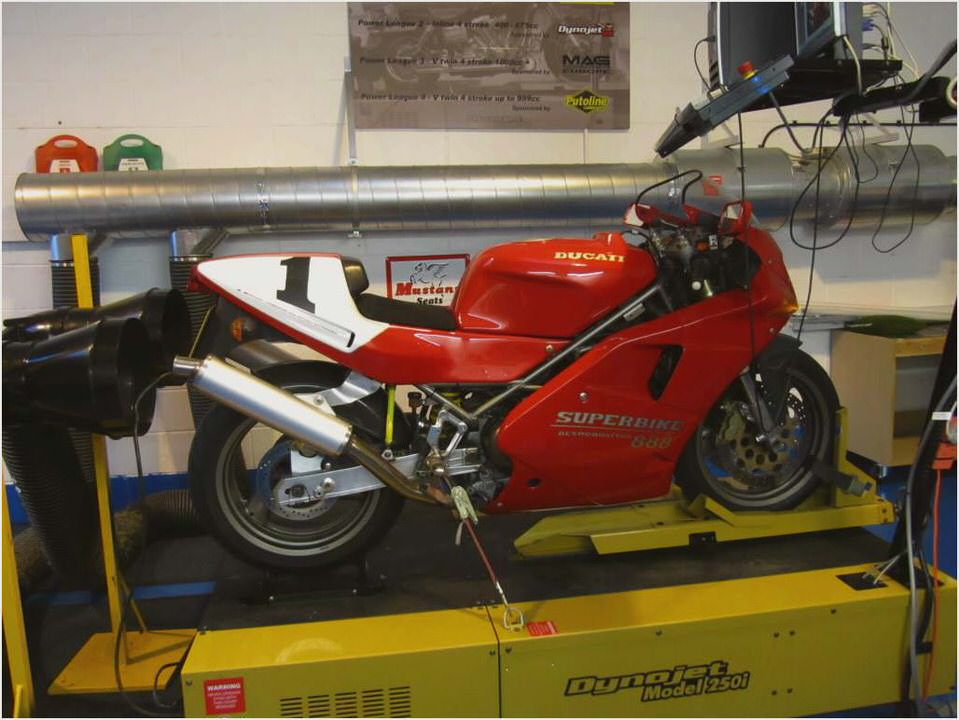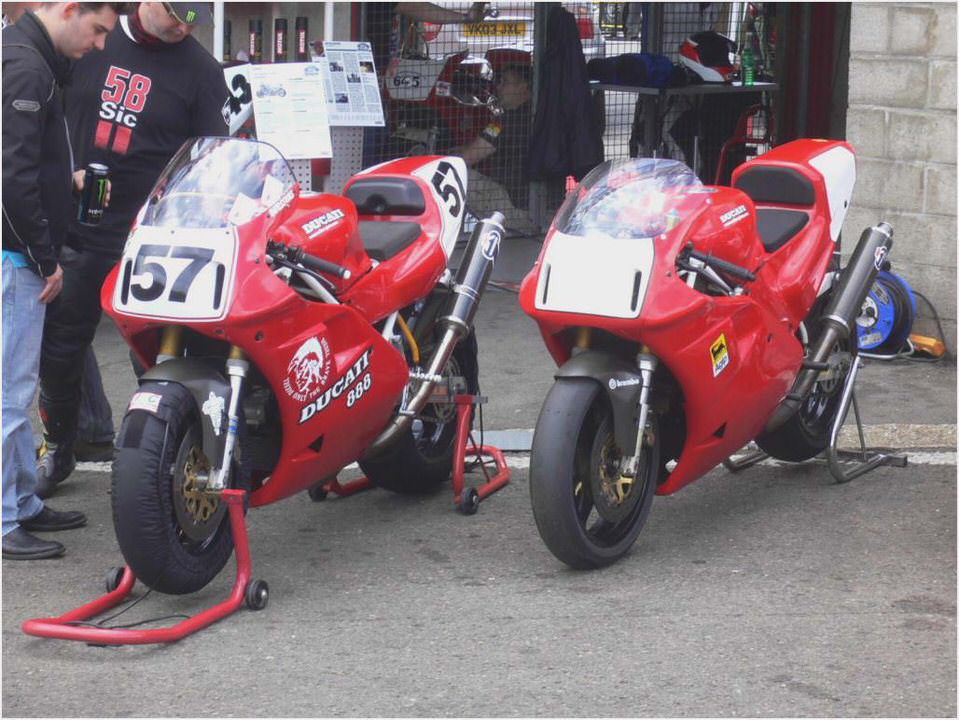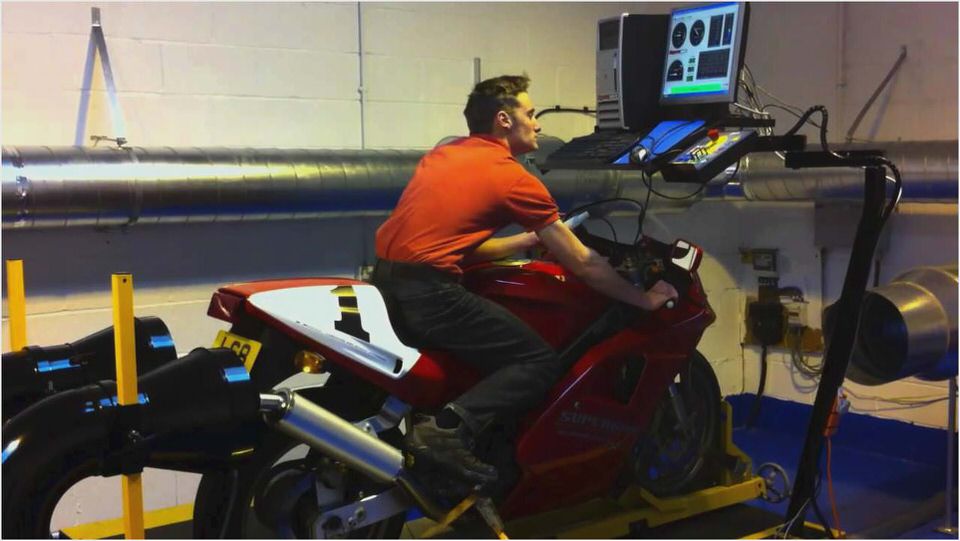
2010 Ducati Hypermotard EVO/EVO SP
MotoUSA flys out to Arizona to ride the updated-for-’10 Hypermotard EVO and EVO SP. Check out the 2010 Ducati Hypermotard EVO/EVO SP Video.
Evolution (ev•o•lu•tion): A gradual process in which something changes into a different and usually more complex or better form; The process of developing; Gradual development; Change in the genetic composition of a population during successive generations.
By definition evolution is a deliberate progress, not a major change. And this is exactly what Ducati has done with the updated 2010 Hypermotard 1100 EVO range. According to Ducati, the release of the new Hypermotard 796 gave new riders an entry into the HM line and allowed the 1100 to be pushed further upmarket.
Thus, replacing the existing 1100 HM line, the EVO and EVO SP are the result of feedback from customers and racers alike, aimed to evolve the bike into a better form of the previous version. We joined a host of fellow moto-journalists in Scottsdale, Arizona for the U.S. Press Launch to find out what all the changes add up to.
The new Hypermotard EVO gets Streetfighter-style gauges (top) and an 85% larger radiator to keep things cool.
Aim No. 1 for Ducati was to reduce weight to aid in handling as well as to improve acceleration. It achieved this through a new trellis frame, in which the rear forged sections were replaced by much lighter and thinner precision milled units, providing the same rigidity but shaving five pounds at the same time. This theme then extends down to the engine, where the crankcases were totally redesigned and made substantially smaller in size.
The Italian’s have employed their trademarked Vacural technology when vacuum die-casting the cases, the same process used on their Superbike engines. Inside a featherweight 848-style flywheel is employed, further dropping the weight, making for an impressive overall engine savings of 11.5 lbs. The end result is a 15.5-lb lighter motorcycle, said to tip the scales at 379 lbs dry.
Next up was the task of finding more horsepower. The previous model’s L-Twin engine produced a claimed 90 hp at the crank and the updated version gets a host of tweaks and changes. Bore and stroke stays at the same 98 x 71.5 mm, so the 1078cc L-Twin’s displacement isn’t changed. Ducati gained the additional ponies through internal engine modifications, starting with a new cylinder head, which uses a single spark plug as opposed to the old DS (dual spark) unit.
This is possible through the employment of a new Siemens ECU system, which has lambda sensors in both exhaust pipes for more accurate readings. The new head is said to have better flow paths both on the intake and exhaust sides, which in turn is fed by a slightly larger airbox. The boys from Bologna are quick to point out that by virtue of sticking with an air-cooled unit they save weight as well as size, saying it’s no bigger or heavier than a liquid-cooled single would be.
A CAD look at the engine updates (top to bottom): Smaller crankcases; new cylinder head; updated pistons and 848-sourced flywheel.
Compression ratio is bumped up from 10.7:1 to 11.3:1, the result of new dome-shaped pistons. Also, the aforementioned lighter 848 flywheel allows the powerplant to spin up substantially faster. An 85% bigger oil cooler is employed to keep all the hop-ups at the proper operating temperature.
Called the Desmodue (two-valve) Evoluzione engine, the end result is 95 hp at 7500 rpm according to the Italians, gaining five hp over the previous model. While a 5.5% increase may not sound like much, one can instantly feel it in the real world – but more on that later.
The dash and switch gear are sourced from its sibling the Streetfighter, making things much sleeker in design as well as now using Siemens’ electronics throughout. Ducati claims they are better for street-oriented machines and will be using this for all-new road models with the exception of its Superbike range, which continues to run Magneti Marelli.
The white back-lit display relays speed, revs, time, oil temperature, battery voltage, two trip meters, fuel reserve indication, oil pressure, as well as a host of warning lights. The real trickness, however, comes from it doubling as a control panel for the Ducati Data Analyzer (DDA). Available as an accessory on the EVO and standard on the EVO SP, the system measures speed, rpm, gear position, throttle percentage, distance and temperature, all downloadable to your computer quick and easily via USB port.
Lighting the road is a compact headlight, while LEDs are used out back for the brake light – these are enhanced by high-definition lenses. The handguard-mounted blinkers feature LED lighting as well. A new set of pillion grab handles allow a safer grip for those riding passenger.
The rear passenger footpegs are also designed for quick removal, to give one that ‘monopotso’ look when desired. As for suspension, the base EVO gets a black-anodized fork, a direct request from consumers.
Rider footpegs on all Hypermotards now have removable rubber inserts to aid in vibration reduction. Chassis-wise it stays the same as the previous model, which was based off the tried-and-true Multistrada. With the exception of the previously mentioned weight savings, the geometry and basic layout remain unchanged.
It does get new Pirelli Diablo Rosso tires, however, 120/70-17 front and 180/55-17 rear.
Retailing for $11,995, the EVO will hit dealers within the next couple weeks. And while it may not seem like much as far as changes go, as the name suggests, it’s an EVOlution, not a totally new machine. And sometimes a little can go a long way…
Updated graphics, new suspension (top), Brembo monobloc brakes (middle) and Teflon footpeg sliders are some of the upgrades the SP features over the base EVO.
While the SP gets all of the base model engine and electronics upgrades, there’s much more to it. Replacing the previous ‘S’, though much more aggressive, the SP sits quite tall with a 34.4-inch seat height. This comes as the result of all-new suspension both front and rear.
Monster-sized fully-adjustable 50mm Marzocchi forks add 30mm more travel and feature DLC (Diamond-Like Carbon) coating on the inner tubes for reduced stiction. Out back an Ohlins shock is put to use and it’s designed to be more racetrack-friendly. It also raises the ride height slightly.
Both ends are fully adjustable for compression, rebound and preload. As a result the bike sits over an inch higher, aimed to give more ground clearance when pushed hard at the track.
Ducati worked very closely with Marzocchi as well as track day users and racers alike to make the SP much more closed-course friendly. The fork now features progressive springs which allow it to dive properly under braking, making the rear step out (back-in) easier if so desired, but also doesn’t rebound too fast when letting off the brakes mid corner.
Another result of this racetrack research is the addition of 20mm risers on the handlebar mounts, aimed to give a more ideal riding position, especially at lean where leverage is needed to pick up and turn the bike. Same can be said for the Teflon footpeg and fork sliders, both designed for the track.
Chassis wise the SP also has slightly tweaked geometry from the longer fork and shock, with 108mm trail as opposed to 101mm, improving stability and counteracting the aggressive suspension setup some. Rake remains at 24 degrees on both bikes.
Stepping up the stopping game are the same monobloc Brembo calipers used on Ducati’s high-end Superbikes, each featuring four 34mm pistons gripping 305mm discs. Speeding up transitional handling are lightweight Marchesini five-spoke wheels front and rear, black in color with a red rim strip to set them apart from the standard cast units. Forged and then machined, the alloy wheels are “significantly” lighter than the base units.
These come shod in Pirelli Diablo Supercorsa SP tires – 120/70-17 front and 180/55-17 rear. Basically a race tire for the street, these are the pinnacle of high-performance road-legal rubber. Just don’t get caught in the rain.
Reducing weight slightly and adding to the ‘trick’ factor is a host of carbon parts, including the fork protectors and front fender, rear fender, belt covers and tail section side covers. For our test the SPs were also fitted with Ducati Performance’s optional Termignoni single-side exhaust and high-flow air filter. Retail price will be $14,495 and expect to see the EVO SP in dealers mid-February.
We instantly felt at home on the base EVO as it feels nearly identical to the previous Hypermotard. Just 15 lbs lighter, with five additional horsepower. Never bad things.
The first thing one realizes when hopping on the EVO is the added oomph. It may only make an additional five horsepower and weigh 15 lbs less, but the combination has the front tire leaving the ground almost instantaneously.
The Hyper runs well from low rpm, with good action from the dry clutch, even if it doesn’t engage until the very end of the lever travel. The torque of the updated engine gets one underway easily, with the real wave of power starting to build at 3000rpm before hitting its sweet spot from 5000rpm on up. Mated to the lighter flywheel the engine now hits redline in a hurry.

Jump on the SP and things progress to the next level, as the units we rode got an additional five horsepower from the Termignoni exhaust and air filter. The deep and throaty bark is utterly addictive and fuel delivery in the mid-to-upper rev range is good. It was prone to surge slightly under low throttle, said to be the result of the bikes we rode not getting the proper tune.
Instal the right chip and we suspect there wouldn’t be any issues.
Mated to the taller and far stiffer suspension, the SP should really be called the WM (Wheelie Machine). Just crack the throttle ever so slightly and the front tire is pawing vertically at the sky, then simply modulate small amounts of gas and one can ride mono-wheeled for as long as the heart desires. Imagine a 1078cc dirt bike and you’ll get the picture.
If you can’t wheelie the SP, well, you probably can’t wheelie anything.
The taller suspension and updated ergos of the SP make it more agile and knife-edged, but the race-bred rubber takes some time to get heat into.
This is easily controlled with the leverage provided by the wide bars and upright seating position as well as accurate rear brake. Very spacious in size with low-set and forward-mounted footpegs, the HM is sure to fit even the tallest of riders. The base model’s 33.3-inch seat height was much easier for my vertically challenged 5’7” frame to mount as compared to the 34.4-inch height of the SP.
Those with smaller inseams will struggle on the SP, as you must one-foot-it at all times, but experienced riders will do fine, as once underway it’s not a problem.
Overall the base model doesn’t feel all too different than the previous edition, with the exception of the added acceleration. This isn’t a bad thing, though, as we quite like the original. In terms of handling it feels very familiar, but we suspect if ridden back-to-back the lighter weight of the EVO would aid in handling; without a direct comparison available it was nearly impossible to notice.
The plush suspension did well to soak up some of the bumpier roads, even if the seat isn’t exactly what we would call comfortable. This and the lack of any wind protection make any kind of long distance riding rough.
As for the SP, well, that’s a totally different animal. The longer Marzocchi fork and taller Ohlins shock produce a bike that is not only stiffer but far more responsive. Mated to the grippier Pirelli Supercorsa SP rubber, once heat was in the tires one could really wail, the bike responding better the harder it was pushed – as long as the road is smooth – even testing lean angles enough to ground down the Teflon footpeg sliders (check out the above photo).
The higher bars (more leverage) and updated geometry makes changing direction as easy as anything on the market today. Our
For the rough roads in which we tested the two updated bikes, the base EVO’s softer suspension and street tires were better suited, though we could easily tell the SP has some serious racetrack potential. Good news is: Both new machines cost exactly the same as the models they replace.
Arizona roads were fairly congested and a bit rough in the canyons, which wasn’t ideal for the SP/race rubber combination. It took a bit to get the tires heated and the stiffer suspension was less forgiving. Once on smoother roads, however, one could quickly see that the SP’s true home is on a track.
We quite like the Streetfighter-sourced switchgear and dash, as they’re not only sleek but work well. Both bikes get a claimed 41 mpg, which comes in handy since they only have 3.3-gallon tanks. As for our biggest complaint, that would have to be the mirrors.
While cool and sleek in the way they mount and fold up, they don’t provide much in the way of visibility and vibrate quite a lot, while also protruding fairly far. This can be changed with a kit from Ducati Performance or a host of aftermarket companies. That said, hardly a major complaint.
Ducati was spot-on to call the new machine the Hypermotard EVO . as that’s exactly what it is: An evolution of the previous HM, one which we were already very fond of. (Although if it were up to us we would have done a bit more in the way of visual changes to the base model to set it apart from the previous Hyper.) In the case of the SP, be ready for a serious track-based weapon, as this is where it was designed and this is where it should be ridden – no question a far more serious motorcycle than the previous ‘S’ model.
But the best part lies with the pricing, consumers getting either EVO for exactly the same money as the machines they replace, while providing improved performance in nearly all areas. Now that’s hard to complain about.


- Collectible: Ducati 860 GT-News & Reviews-Motorcycle Trader
- 2002 Ducati 998 – Motorcycle USA
- Windscreen Innovators – Zero Gravity
- For Sale 2001 Ducati Monster S4
- Gambar Foto Modifikasi Motor Honda Vario Revo DX Yamaha Jupiter MX z 135…

